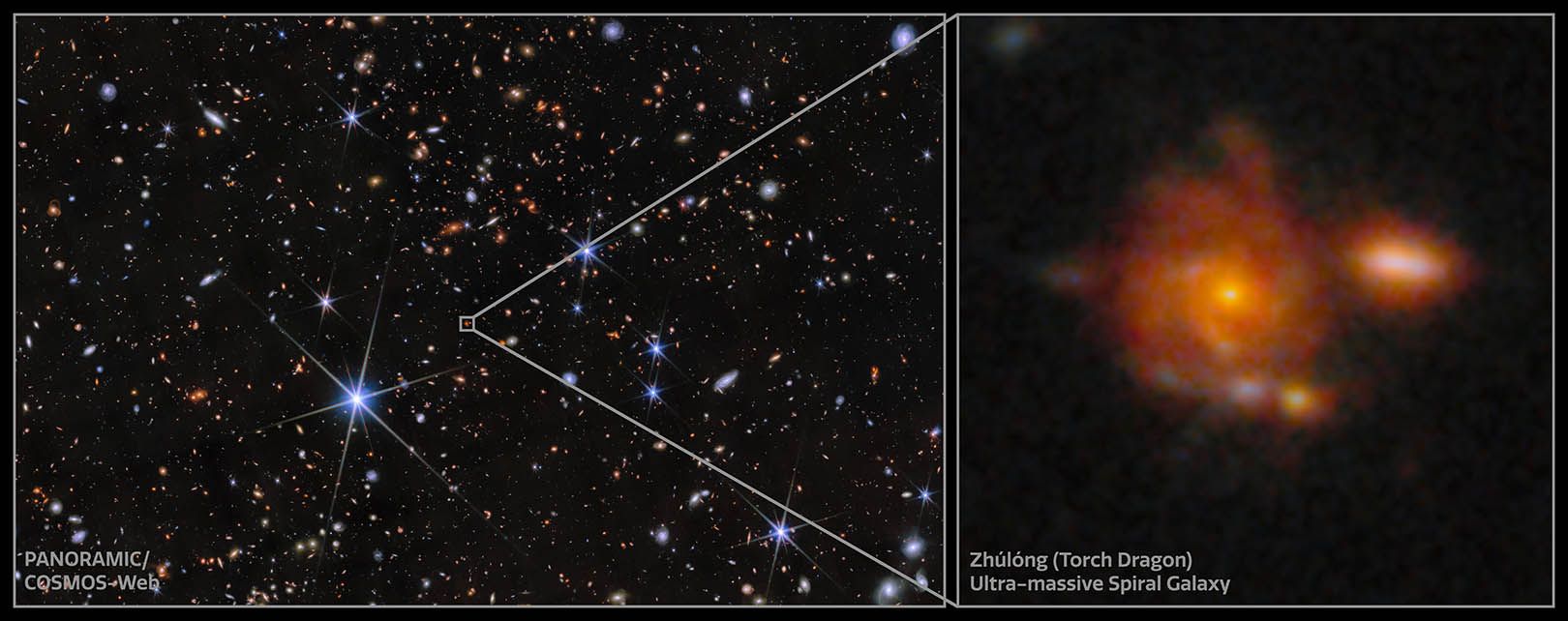NSF NOIRLab Astronomer Discovers Oldest Known Spiral Galaxy in the Universe

An international team led by NSF NOIRLab astronomer Christina Williams has discovered the most distant spiral galaxy known to date. Named Zhúlóng, meaning ‘Torch Dragon’ in Chinese mythology, this ultra-massive system existed just one billion years after the Big Bang, and yet it shows a surprisingly mature structure. Zhúlóng was discovered as part of the PANORAMIC Survey conducted on the James Webb Space Telescope.
Large, grand-design spiral galaxies like our own Milky Way are common in the nearby Universe. But they have proven hard to find in the early Universe, which is consistent with expectations that large disks with spiral arms should take many billions of years to form. However, assistant astronomer Christina Williams of NSF NOIRLab, which is funded by the U.S. National Science Foundation, has discovered a surprisingly mature spiral galaxy just one billion years after the Big Bang [1]. This is the most distant, earliest known spiral galaxy in the Universe.
This galaxy, named Zhúlóng — meaning ‘Torch Dragon’ in Chinese mythology, a creature associated with light and cosmic time — was discovered as part of the PANORAMIC Survey. This project is being conducted with the James Webb Space Telescope (JWST) and is co-led by Williams and Pascal Oesch of the University of Geneva (UNIGE).
The research was motivated by building a wide-area imaging survey using JWST to complement future wide-area surveys based out of NOIRLab, such as the upcoming Legacy Survey of Space and Time (LSST), which will be conducted using the NSF–DOE Vera C. Rubin Observatory.
“Wide-area surveys are necessary to discover rare, massive galaxies,” says Williams, co-author on the paperpresenting these results. “We were hoping to discover massive and bright galaxies across the earliest epochs of the Universe to understand how massive galaxies form and evolve, which helps to interpret the later epochs of their evolution that will be observed with the LSST.”
Zhúlóng has a surprisingly mature structure that is unique among distant galaxies, which are typically clumpy and irregular. It resembles galaxies found in the nearby Universe and has a mass and size similar to those of the Milky Way. Its structure shows a compact bulge in the center with old stars, surrounded by a large disk of younger stars that concentrate in spiral arms.
This is a surprising discovery on several fronts. First, it shows that mature galaxies that resemble those in our neighborhood can develop much earlier in the Universe than was previously thought possible. Second, it has long been theorized that spiral arms in galaxies take many billions of years to form, but this galaxy demonstrates that spiral arms can also develop on shorter timescales. There is no other galaxy like Zhúlóng that astronomers know of during this early era of the Universe.
